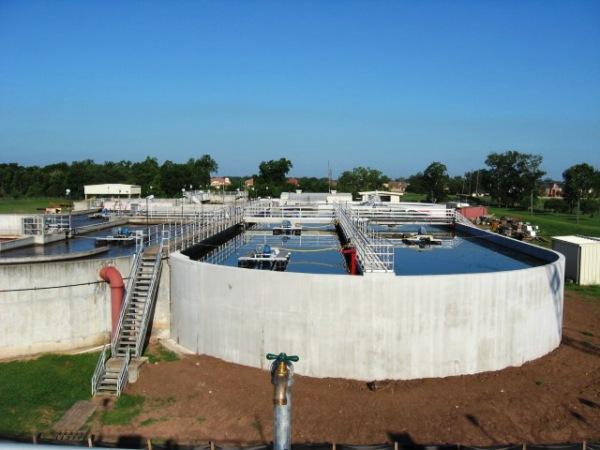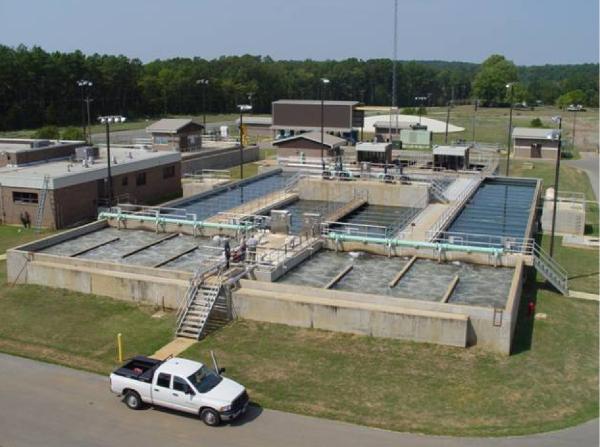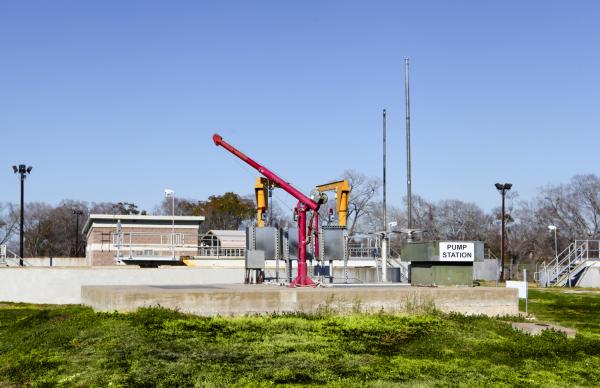Cold Weather Considerations for Treatment Plants
In response to historic inclement weather in Texas and neighboring states, KSA is providing critical infrastructure improvements to help communities better prepare for future prolonged weather events. All regions worldwide need to prepare for situations that have the potential to disrupt service. In Texas and other southern states, municipalities prepare for circumstances that are specific to the region. If nothing else, this weather event has given cities and service providers a window to vulnerabilities within their systems and will need to be addressed.
The following is a summary of potential solutions and precautions for some of those vulnerabilities related to water and wastewater treatment plants.
City of Longview Grace Creek Wastewater Treatment Plant
Power Supply
It is a common practice for service providers to have dual power supply to treatment plants from at least two different sub-stations. This is a great solution when the power disruption is associated with a singular event causing a disruption in electrical service. Unfortunately, in this specific instance the issue is the availability of electrical power supplied to the system at large. In other words, having redundant power from two different substations is great except when there is not enough power to supply either substation.
As a result, utility service providers may need to re-examine their reliance on a second power feed from the grid as an emergency backup source. Alternatives to consider include on-site solar, wind, and natural gas generators as well as diesel generators with fuel storage. A less robust but also less expensive alternative would be to provide easily accessible external electrical connections for a small fleet of portable generators that can be brought to facilities as needed.
Heat Tracing and Insulation
The cost of heat trace and insulation packages for treatment plants can vary widely in the marketplace. For example, a typical 2 MGD water or 2 MGD wastewater treatment plant with many circuits can be combined with sophisticated Inputs and Outputs (I/O) into one large industrial grade control panel that can cost well over $100K to construct.
“In Bastrop, Texas where KSA has recently designed a new 2 MGD wastewater treatment plant, expandable to 8 MGD, electrical engineers developed a simple plug and play commercial solution to reduce costs and provide a system that was simple to use and easy to maintain. KSA’s electrical engineers developed this solution using 120V commercial devices that can also be easily tailored for other purposes. With this new solution, KSA estimates a heat trace and insulated small packaged systems for $15K - $20K.” – Bob Lane, P.E., Project Manager, Bastrop Wastewater Treatment Plant #3.
Heat trace is a resistive element that heats up when electricity passes through it. Heat trace circuits take on many different sizes, shapes, and configurations. In order to maximize the efficiency of any heat tracing system, an insulating component is often added on top of the heating element. Further, to protect both the heating element and the insulation, a jacket made of plastic or stainless steel is added around both for long term protection and effectiveness.

City of Missouri City Wastewater Treatment Plant
Plant - Influent Lift Stations and Water Supply Pump Stations
As outlined above, in order to protect against severe cold weather events, wastewater treatment plant influent lift stations and raw water supply pump stations should also have either heat tracing and insulation installed or should be built into valve pits.
For new installations, your engineer should work with the client to determine if heat trace and insulation or new valve vaults should be implemented to assist with weather proofing these critical assets. It may be a simple matter of whether the client is assessing new construction or existing construction. Generally, for existing facilities, the heat and insulation method would be considered the simplest and most cost-effective method for protection if local power is available. However, for new facilities, the client can look at both methods and potentially select the valve vault method when considering other factors – such as security and aesthetics, where budget is not top priority.
Plant – Non-Potable Water Systems
All yard hydrant hose bibbs should be free draining or freeze-proof for non-potable water systems. This is a widely adopted practice even in warmer climate states.
Headworks
This process element is a great candidate for freeze-proofing, even in warmer climates. There is a small diameter water supply connection to the influent screen with small diameter priming connections for the grit system. These should all be insulated and heat traced, as they are susceptible to freezing. Because there were no repercussions due to an inoperable grit system for 2 or 3 days in warmer climates, the priming connections have typically not been heat traced and insulated for grit system connections. However, for communities that feel the need to be as prepared as possible, they may want to consider doing this in the event they see prolonged freezing temperatures.
Primary and Secondary Reactors
The good news concerning primary and secondary reactors at wastewater treatment plants is that their mass helps prohibit freezing, even in prolonged cold weather events. As outlined above, the NPW supply can come into play for cleaning and housekeeping when installed on these structures and should have preventative measures installed where appropriate.
Filtration Systems
In warmer climates like Texas and Florida, it is common to find pressure filters at water treatment plants without insulation and heat tracing. These systems are great candidates for quick, low cost modifications that can provide a big impact when faced with extreme cold weather.

City of Nacogdoches Water Treatment Plant
Chemical Feed Systems
Chemical feed systems should be installed inside heated buildings or, if outside, with heat traced and insulated tanks and associated supply and discharge piping. Many of the chemicals that are used to treat water and wastewater already have a temperature sensitivity below 55 degrees, so it is common to find existing protections for these systems even in warmer climates. In Bastrop, KSA has designed heating elements that were built into the exterior skin of the tanks. This was a value engineering approach designed to save on costs associated with the development of a new wastewater treatment plant as compared to the cost of heated buildings.
Digester Systems
Digester systems at wastewater treatment plants also have a great deal of mass associated with them, which helps prevent freezing. They also benefit from the aeration process due to the air supply from blowers. It is common for blower discharge air to reach 120-155 degrees, so in essence, the digesters have their own “heaters.”
Double Wall Encasement – Miscellaneous
Double wall encasement has historically been used for leakage protection in chemical feed systems. KSA is suggesting it may be useful to view this for freeze proofing as well even in milder weather with less frequent cold spells. More specifically, the annular space between two pipe walls can act as an insulator if designed and installed or retrofitted in that way.
System Integrity Reviews
As a leading expert in water and wastewater treatment, KSA is available to help prepare or modify Operations & Maintenance Manuals and Emergency Response Plans for municipalities and special utility districts. In addition, KSA can help utilities analyze treatment systems for vulnerabilities and recommend modifications for improved reliability/redundancy. This involves modeling and creative thinking in conjunction with system operators and can result in recommending additional valving for isolating potential failures, and additional drains to prevent freezing. It would also result in some resiliency recommendations like heat tracing and insulation as mentioned previously.

City of Fairfield Mims Creek Wastewater Treatment Plant
KSA recognizes the below normal freezing weather of February 2021 is unprecedented. Furthermore, Texas and neighboring states may not see this magnitude of weather again for another 10 or 20 years. The intent of the solutions provided above is to provide modifications and measures to help prevent system shutdowns associated with freezing infrastructure. KSA is positioned to assist municipalities and special utility districts initiate these modifications in the most cost-effective way possible.

